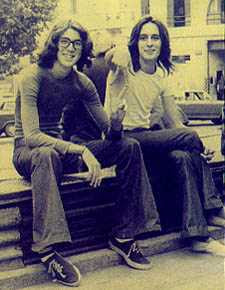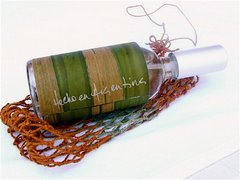When I had more free time in my life, I would wonder around the city as if I were a tourist, and used to take a bus just for the sake of taking it and seeing what landscapes of the city would show me.
And definitely, the colectivo 130 offers sights of the city you will love tours of the city.
So, I invite you to hop on to this bus and marvel with the 130’s journey.
I would suggest to jump on in the bus stop of Libertador Ave. and Juramento, a block away from the Buenos Aires’s Chinese neighborhood (Pedro de Mendoza St., Montaneses y Arribenos).
As many other bus lines in BA, it may take 10 to 15 minutes for the bus to arrive to the stop, and when it does it generally arrives 3 in a row. So, if the first bus is too full, wait for the second one and take a comfortable seat by the window.
The first neighbourhood the bus passes through is Belgrano, in Etcheverria St. you will catch a glimpse of the English style houses now remodeled into modern ones.
You will enter to Palermo through one of my favorite’s paths – Los Bosques de Palermo (Palermo woods…) the view of the lake and the nature of the place with BA’s towers behind is spectacular, specially if it is at sunset time with a reddish skyline. It is an important recreational zone for BA inhabitants during weeken ds.
ds.
The next thing to observe is the Palermo Racetrack (Hipodromo de Palermo). If you are lucky, while the bus is stopped by the red light you may spy on a horse race. When the bus returns to Libertador Ave. on the opposite side of the racetrack there is the Palermo’s Polo Courts, where the most important Polo Championship is played every year, the Palermo Polo Open Championship.
 I love ridding through Libertador Ave., is an elegant, wide and open avenue with beautiful buildings in its sides (many of them of French style( and lots of parks. Your head will turn from left to right constantly trying to see everything this Ave. shows. If you go during November, Jacaranda and Tipa tree’s flowers make a spectacular lilac and yellow carpet in the pavement. And during February and March everything is pink due to the Lapacho Rosados in blossom.
I love ridding through Libertador Ave., is an elegant, wide and open avenue with beautiful buildings in its sides (many of them of French style( and lots of parks. Your head will turn from left to right constantly trying to see everything this Ave. shows. If you go during November, Jacaranda and Tipa tree’s flowers make a spectacular lilac and yellow carpet in the pavement. And during February and March everything is pink due to the Lapacho Rosados in blossom.
An exquisite example of the palaces constructed between 1880 and 1930 by aristocracy in Argentina is the Bosch Palace, now residence of the USA Ambassador and museum. This palaces where design by European Architects, their owners wanted to transform BA. Their main model was Paris, and they chose mainly the French Academicism Architectural Style, for the new buildings. The Bosch – Alvear family bought to Rene Sargeant the plans for the building which was constructed between 1910 and 1917.
When BA celebrated the first century of their independence from Spain, in 1910, the city received presents from different countries. Some of them now are part of the city’s charm. An example of this is the “Monumento de los Espanoles” as it is popularly known, but its true name is “La Carta Magna y las cuatro regiones Argentinas”, inaugurated in 1927, but its first stone was put by the Infanta Isabel de Borbon in 1910.
At the intersection of Libertador Ave. and Sarmiento Ave. you’ll find the Sarmiento Monument, located where Sarmiento’s political enemy, Rosas’ house was located. The sculpture was done by August Rodin. On the right corner there is one of the entrances to de Buenos Aires Zoo founded in 1874. at it’s entrance you may observe the traditional “mateo” a coach pulled by horse, drove by one man in which you can ride through the city, they are called like that because of the name Mateo, the horse of a very popular character, an Italian immigrant, of a play by Armando Discepolo.
Another Palace that use to belong to an Alvear family member was the now a days Italian Embassy in the corner of Libertador Ave. and Bustamante st. It was built in 1920s and it has a neo-classical style.
Don’t miss on your right the Errazuriz Palace, now a days Museo de Arte Decorativo, as the Bosch Palace, its plans where designed by Rene Sargeant, its original owners where the Errazuriz-Alvear family. A unique monument of the belle époque, pure elegance and sophistication…
To be continued…



.jpg)


































